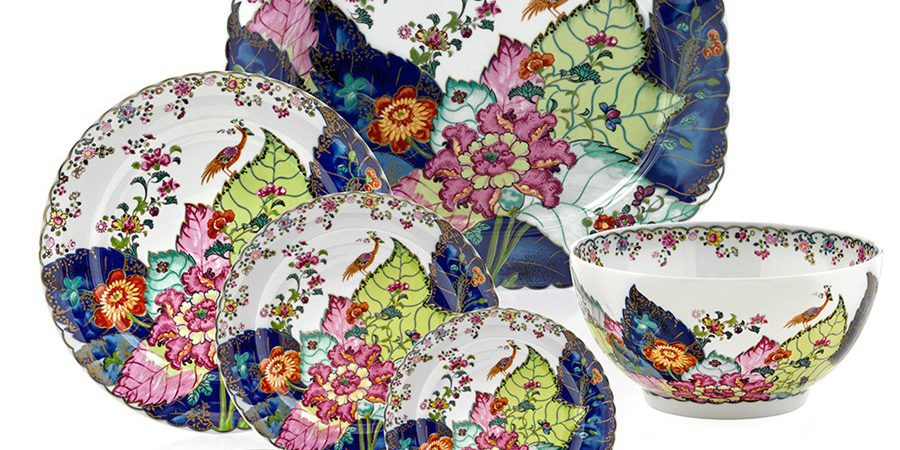A few if any brands achieve the high honor of representing the state officials of a country. Mottahedeh & Company, New York based manufacturer of tableware and decorative accessories, has attained the honor not once but three times, by making porcelain for the dinners of the President of the United States (including three consecutive presidential inaugurations), the U.S. State Department and the Diplomatic Corps. Furthermore, Mottahedeh products have a permanent home in the White House, where they are used on an everyday basis. Founded by Mildred Mottahedeh in earth 20th century, the company has since undergone leadership changes, but has not compromised on the quality that earned its reputation as the finest American made porcelain manufacturer. Read on to find out more about the history and the making of the brand’s legacy and the famous designs, notably the “Tobacco Leaf”, that have molded Mottahedeh to be the trademark tableware of American institutions.
Beginnings
Mildred Motthahedeh was a designer who later became a porcelain manufacturer. She primarily focused on supplying US markets with items handmade and hand-painted in Portugese or Italian warehouses. In the early days of her career, she worked as a designer for other luxury retailers such as Tiffany’s & Co., making her a household name in the industry of luxury craft making. After some years, she founded Mottahedeh along with her husband Rafi Mottahedeh, originally from Iran, who shared the same enthusiasm for collecting art and decorative homeware. Rafi later became her business partner and they began a lifelong journey of creating Mottahedeh. Their son, one of the current owners of the company wrote the following about his parents,
“After their marriage in 1929, it became clear that my father was the scholarly partner who also understood business finances. My mother was the artistic partner with the eye for design and winning manner with people. From her childhood she had been fascinated by the aesthetics of non-Western cultures… Each of them made a buying trip to Persia in the ‘30’s and one unexpected result of these trips was the realization that Persia was a treasure trove of European and Chinese antiques.”
From this discovery stemmed Mottahedeh’s longstanding tradition of remaking Chinese porcelain. They were so successful and accurate in their reproductions that not long after, museum curators began to seek their expertise on replications. The company further thrived when it obtained licenses with various museums and galleries, such as the MET, Colonial Williamsburg Foundation, Mount Vernon Ladies Association, the National Geographic Society and others, to adapt famous antique luxury ceramics, primarily hard porcelain and metals. The pair remained an avid collector of Chinese antiques and continued to grow the company by obtaining new designs as the years went by.
Their son concludes the small biography of his parents with the following:
“My parents were learned collectors, manufacturers of faithful reproductions, and dealers who had gained a fingertip feel for their subject from the great variety of antiquities they bought and sold. These separate roles gave them a certain perspective on what they did. They believed that the universal need to eat was transformed by the arts of the table which could make eating enjoyable to the eyes and other senses. They also believed that, by reviving the best of the past through collecting and reproduction, they fostered the dialog between contemporary design and the past. In this last endeavor they were totally successful, as the great respect for both their collections and their reproductions shows.”
The Craft
The uniqueness that has often been highlighted by admirers of Mottahedeh china is the large selection of complex shapes that can be found on a single piece. Additionally, the amount of color employed to create the detailed illustrations is truly astounding and an idiosyncratic quality of the company; today, each Mottahedeh piece employs 16 colors on average and as many as 27, when the rest of the industry hovers around an averages of 6. The reason for the generous use of colors is because the original intent for the china pieces was to gift them to nobility and high ranking officials in the non-industrial age. Despite industrialization, the company prides itself on retaining their skilled artists as the primary workforce, with the craft being carefully passed on through generations.
Below are some of their finest craftsmanship:






